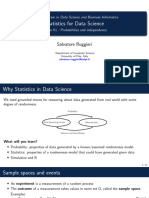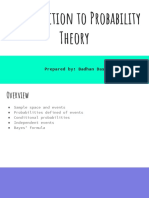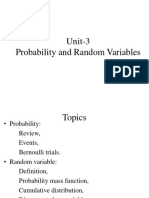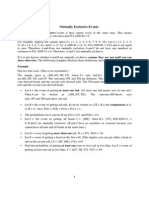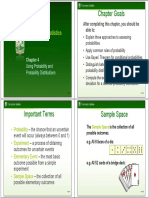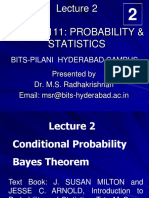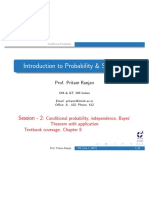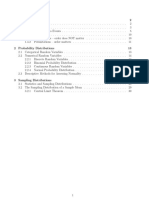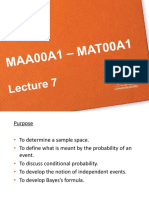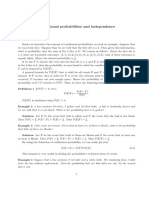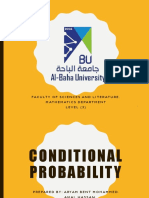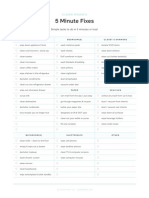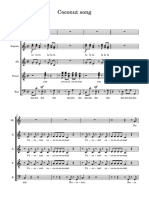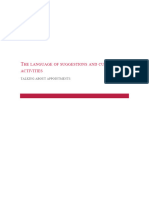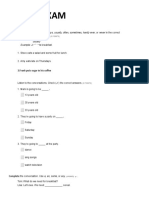0% found this document useful (0 votes)
5 views4 pages4 Conditional Probability
The document covers concepts of probability, including independent events, mutually exclusive events, and conditional probability. It provides examples to illustrate these concepts, such as coin flips, dice rolls, and scenarios involving teachers and printing machines. Various methods for calculating probabilities, including Venn diagrams and algebraic approaches, are also discussed.
Uploaded by
ErinCopyright
© © All Rights Reserved
We take content rights seriously. If you suspect this is your content, claim it here.
Available Formats
Download as PDF, TXT or read online on Scribd
0% found this document useful (0 votes)
5 views4 pages4 Conditional Probability
The document covers concepts of probability, including independent events, mutually exclusive events, and conditional probability. It provides examples to illustrate these concepts, such as coin flips, dice rolls, and scenarios involving teachers and printing machines. Various methods for calculating probabilities, including Venn diagrams and algebraic approaches, are also discussed.
Uploaded by
ErinCopyright
© © All Rights Reserved
We take content rights seriously. If you suspect this is your content, claim it here.
Available Formats
Download as PDF, TXT or read online on Scribd
/ 4







